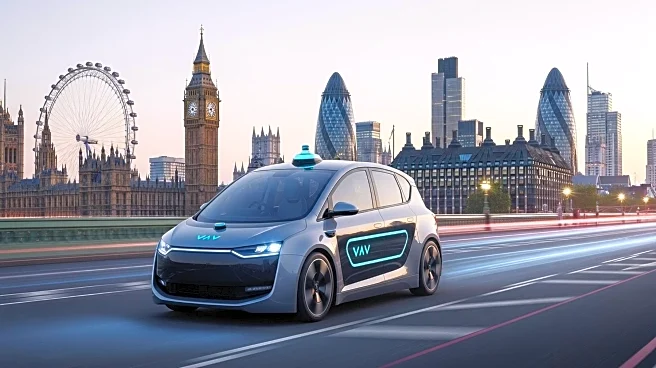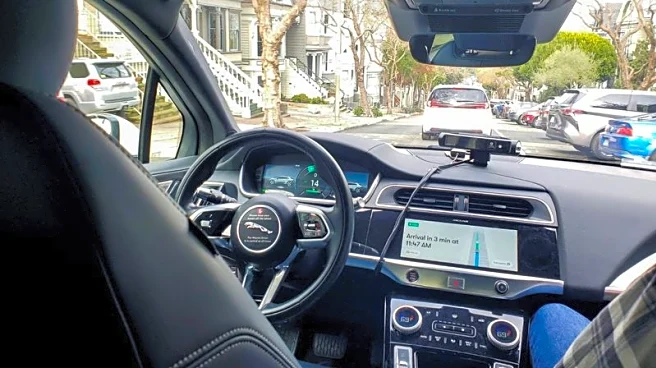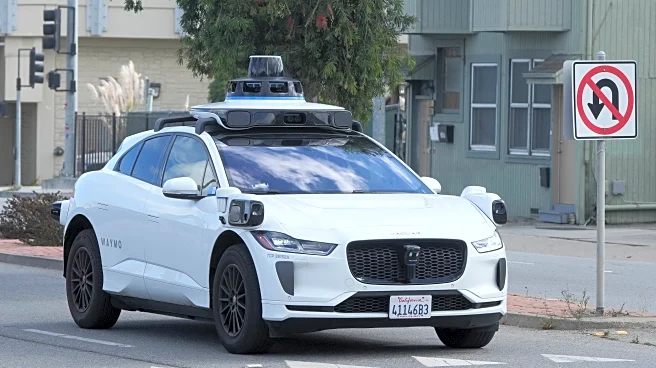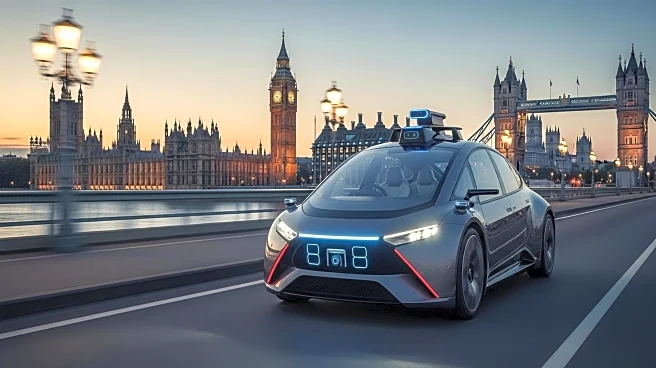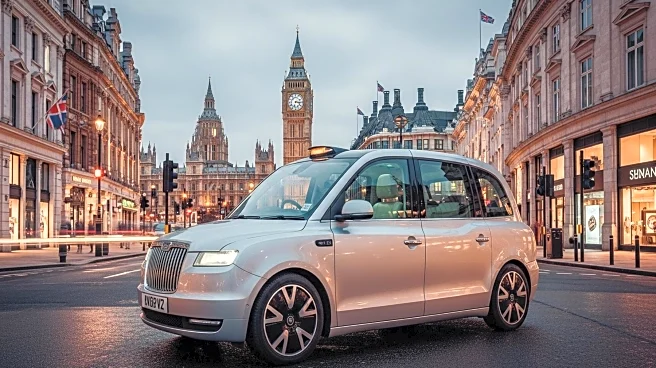What's Happening?
Waymo, a subsidiary of Alphabet, is set to launch its driverless ride-hailing services in London, marking its first European market entry. The company plans to start test drives on London's roads with
human safety specialists at the wheel, aiming to open its robotaxi service next year, pending regulatory approvals. Waymo's fleet in London will consist of Jaguar I-PACE electric vehicles equipped with its autonomous systems. The expansion follows Waymo's aggressive growth in the U.S., where it operates in cities like Los Angeles, Phoenix, and San Francisco. The company has also announced plans to extend its services to Miami, Washington, D.C., and New York City.
Why It's Important?
Waymo's expansion into London signifies a major step in the global deployment of autonomous vehicles, potentially setting a precedent for other cities worldwide. This move could accelerate the adoption of self-driving technology, impacting urban transportation systems and reducing reliance on human drivers. The introduction of robotaxis in London aligns with the city's 'Vision Zero' goal to eliminate serious injuries and deaths in transportation systems by 2041. Waymo's data suggests its autonomous systems are involved in significantly fewer injury-causing collisions compared to human drivers, which could enhance road safety.
What's Next?
Waymo plans to work closely with local and national leaders in London to secure the necessary permissions for fully autonomous operations by 2026. The company is also preparing to expand its services to additional U.S. cities, including Nashville, Denver, and Seattle. As Waymo continues to develop its technology, it may face regulatory challenges and public scrutiny, particularly concerning safety and operational efficiency. The success of its London launch could influence other European cities to consider similar autonomous vehicle initiatives.
Beyond the Headlines
The expansion into London highlights the growing competition in the autonomous vehicle industry, with companies like Wayve also planning robotaxi pilots in the city. Waymo's approach, using radar and lidar, contrasts with Wayve's camera-based systems, reflecting different technological strategies in the sector. The deployment of autonomous vehicles raises ethical and legal questions about liability in accidents and the impact on employment for traditional drivers. Long-term, the shift towards driverless technology could transform urban planning and public transportation infrastructure.
